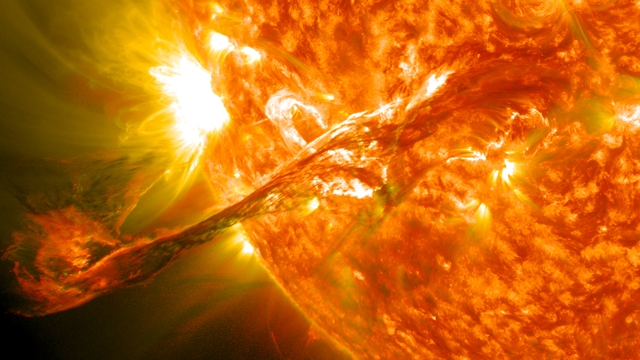Expect Northern Lights and power grid fluctuations this week

Good news! This week, folks living in as far north as Michigan may get treated to a stunning light show as Auroras will be shining brighter and further away from the planet's axis than usual. What a rare treat! The bad news: the same phenomenon that causes the Northern Lights to do their thing could also screw with a few important technologies that we rely on, every day.
According to Seeker.com, the National Oceanic and Atmospheric Administration has stated that charged solar particles, the result of a 'moderate' solar flare barfed out of the Sun on February 12 could cause minor fluctuations in power grids and have an impact on communications with satellites that are currently orbiting the earth. In her story on the issue, Seeker's Elizabeth Howell took the time to explain how the particles are created:
Solar flares and particle ejections are associated with sunspots - dark areas on the sun's surface - that host intense magnetic activity. As the magnetic fields in a sunspot cross, NASA stated, this can cause a sudden energy explosion, also known as a solar flare. This sends radiation out into space.
Sometimes these explosions can also send off charged particles, which are called coronal mass ejections or CMEs. "CMEs are huge bubbles of radiation and particles from the sun," NASA stated. "They explode into space at very high speed when the sun's magnetic field lines suddenly organize."
These bubbles of radiation generally bop off into space, away from the earth. But not this week.
Fortunately, the solar storm forecasters at NASA and NOAA believe that we won't take a huge hit from this latest solar storm. But, if you see the lights in your home flickering, you'll now know why. And hey, if the power does go out, you might be able to eat dinner by the Northern Lights.